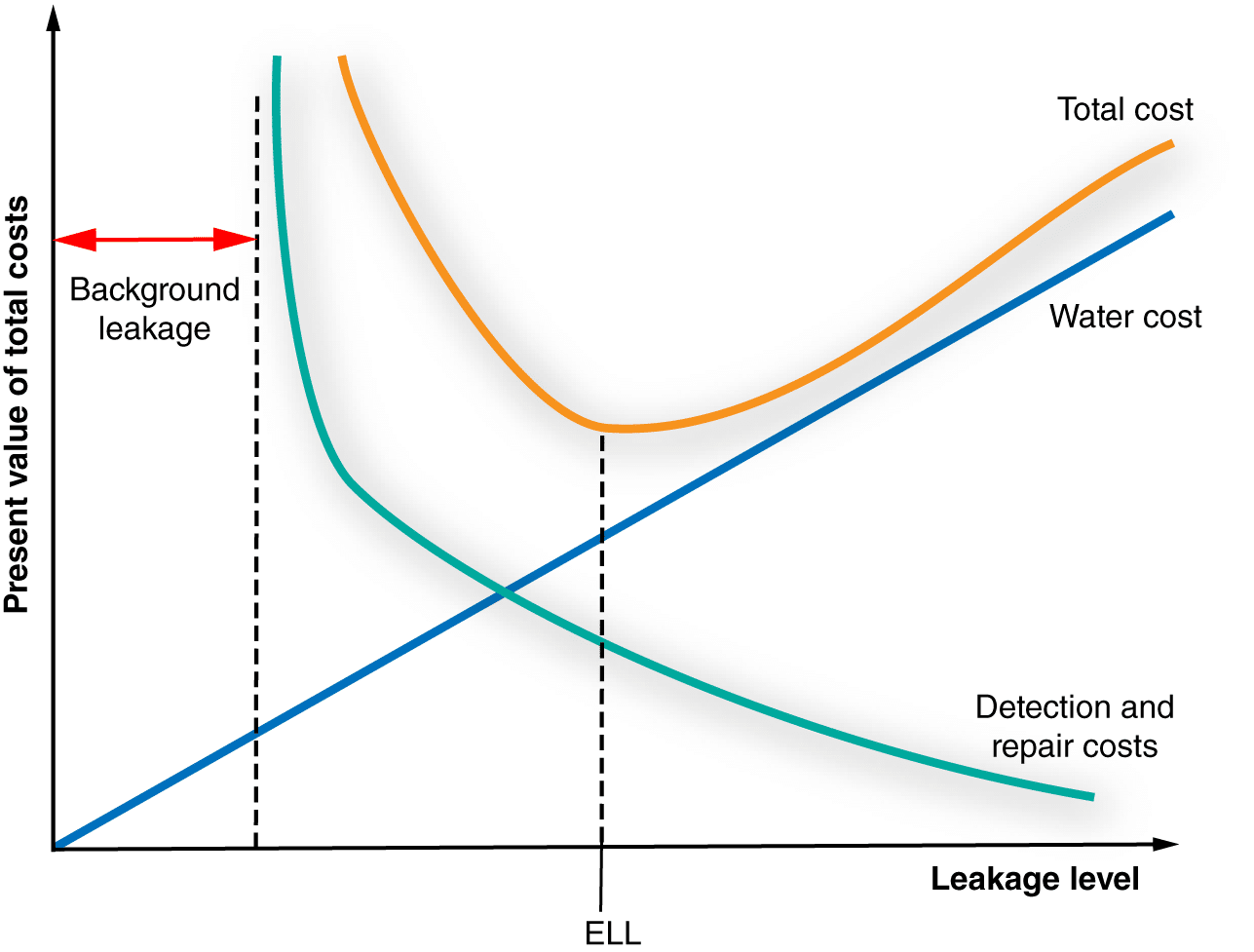In today’s environment, where sustainability and resource management take centre stage, two key concepts in the municipal water sector are gaining significant attention: the Economic Level of Leakage (ELL) and the Sustainable Economic Level of Leakage (SELL). Here’s a breakdown of each.
Understanding the Economic Level of Leakage:
The Economic Level of Leakage represents the optimum point where the cost of controlling water leakage equals the value of the water saved. It’s a dynamic equilibrium, acknowledging that while zero leakage is ideal, the financial and resource costs are often prohibitive. Therefore, the ELL offers a pragmatic approach, aiming to minimise water loss cost-effectively without overspending on leakage control measures.
Understanding the Sustainable Economic Level of Leakage (SELL):
The SELL takes the ELL concept further by factoring in the broader social and environmental costs and benefits of leakage reduction. This includes elements such as:
- Environmental Impact: The carbon footprint associated with water production, treatment, and distribution, as well as the potential environmental damage caused by leakage.
- Social Costs: The impact of leakage on public health, property damage, and traffic disruptions.
- Resource Conservation: The importance of preserving water resources for future generations and meeting sustainability goals.
The SELL aims to find a balance where the overall benefits of water reduction – economic, social, and environmental – outweigh its costs.
Calculating the Economic Level of Leakage:
The calculation of ELL and SELL involves several factors, including the cost of water production, leakage detection and repair, the social and environmental costs of leakage, and the water utility’s service level commitments. Advanced analytical models and tools, often incorporating real-time data and predictive analytics, are used to determine the most cost-effective point of leakage reduction.
Strategies for Achieving the Economic Level of Leakage:
- Leak Detection Methodologies: Utilising professional and skilled teams, coupled with advanced technologies such as acoustic loggers, correlators and machine learning algorithms, can enhance the efficiency of leak detection programs.
- Pressure Management: Implementing pressure management strategies can significantly reduce leakage rates, as lower pressure in the distribution system minimises the rate and frequency of leaks.
- Asset Management: A proactive approach to pipeline management, including regular maintenance and strategic replacement of ageing infrastructure, minimises leakage.
- Community Engagement: Educating consumers about the importance of water conservation and encouraging reporting of leaks can be vital in reducing water losses.
- Regulatory Frameworks: Working within and influencing regulatory frameworks to support investment in leakage reduction can help utilities move towards achieving the ELL.
Challenges and Considerations of Economic Level of Leakage:
Achieving the Economic Level of Leakage is not without its challenges. Utilities must navigate the complexities of accurately estimating the costs and benefits of leakage reduction, adapting to changing environmental and regulatory landscapes, and managing public expectations, particularly during water restrictions or drought periods. Moreover, the investment required for leak detection and repair of infrastructure defects can be significant, necessitating a long-term perspective on return on investment.
Conclusion: The Economic Level of Leakage in Australia and New Zealand
The Economic Level of Leakage (ELL) and the Sustainable Economic Level of Leakage (SELL) represent balanced approaches to managing water losses. The SELL, in particular, aligns economic efficiency with environmental sustainability and social responsibility. For water utilities and municipalities, understanding and striving towards these targets is a regulatory and moral imperative in the face of global water scarcity challenges and the drive towards net zero carbon emissions. As technology advances and the value of water continues to rise, the strategies to achieve the ELL will evolve, requiring ongoing commitment and innovation from all stakeholders in the water sector.
Companies like Aqua Analytics are at the forefront of ensuring that leakage practices are sustainable, cost-effective, and aligned with the communities’ needs by focusing on the Economic Level of Leakage. This holistic approach to water loss management underscores the importance of strategic investment in technologies, community engagement, and regulatory partnerships in safeguarding our most precious resource for future generations through Australia, New Zealand and the Pacific.


